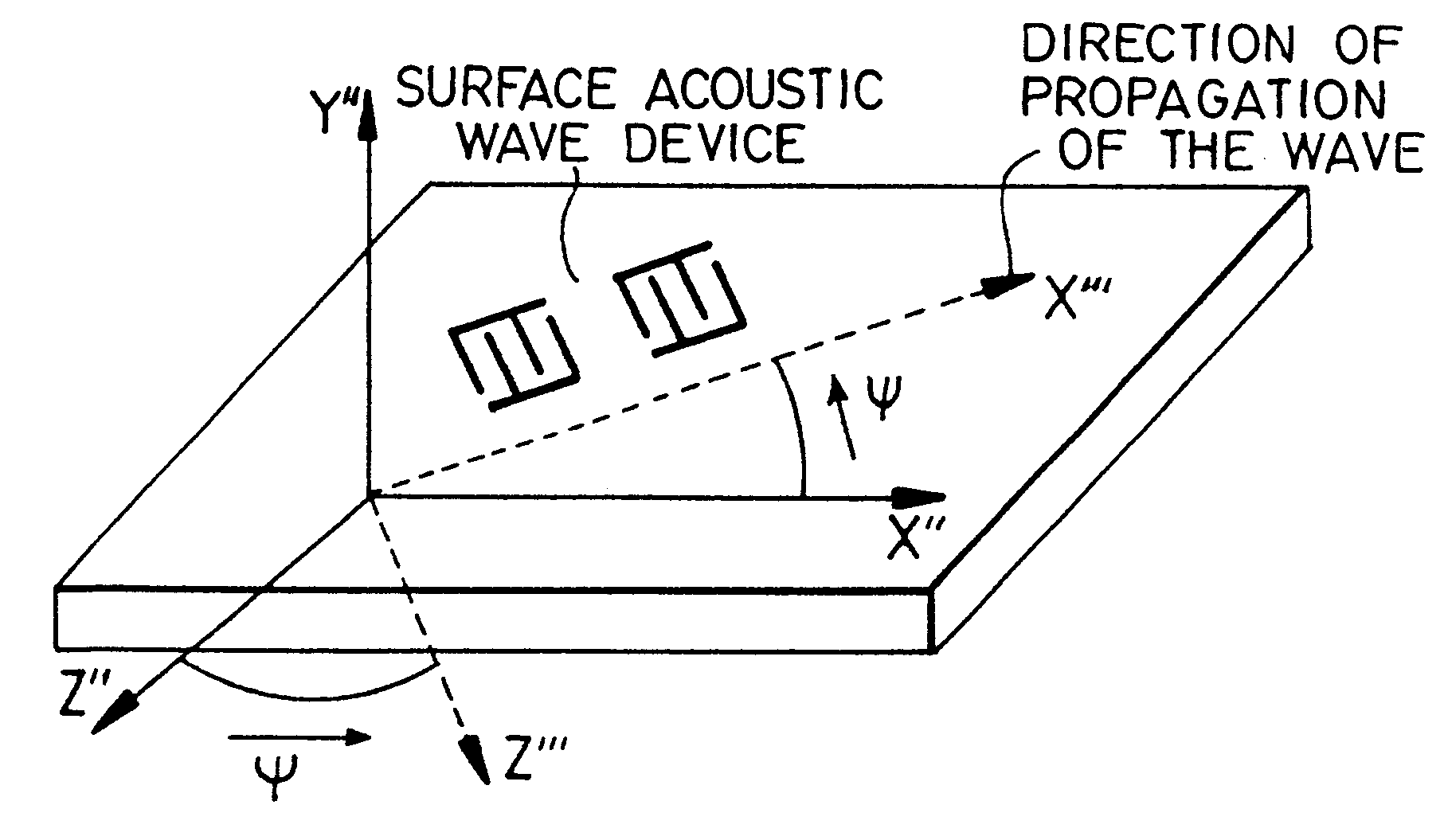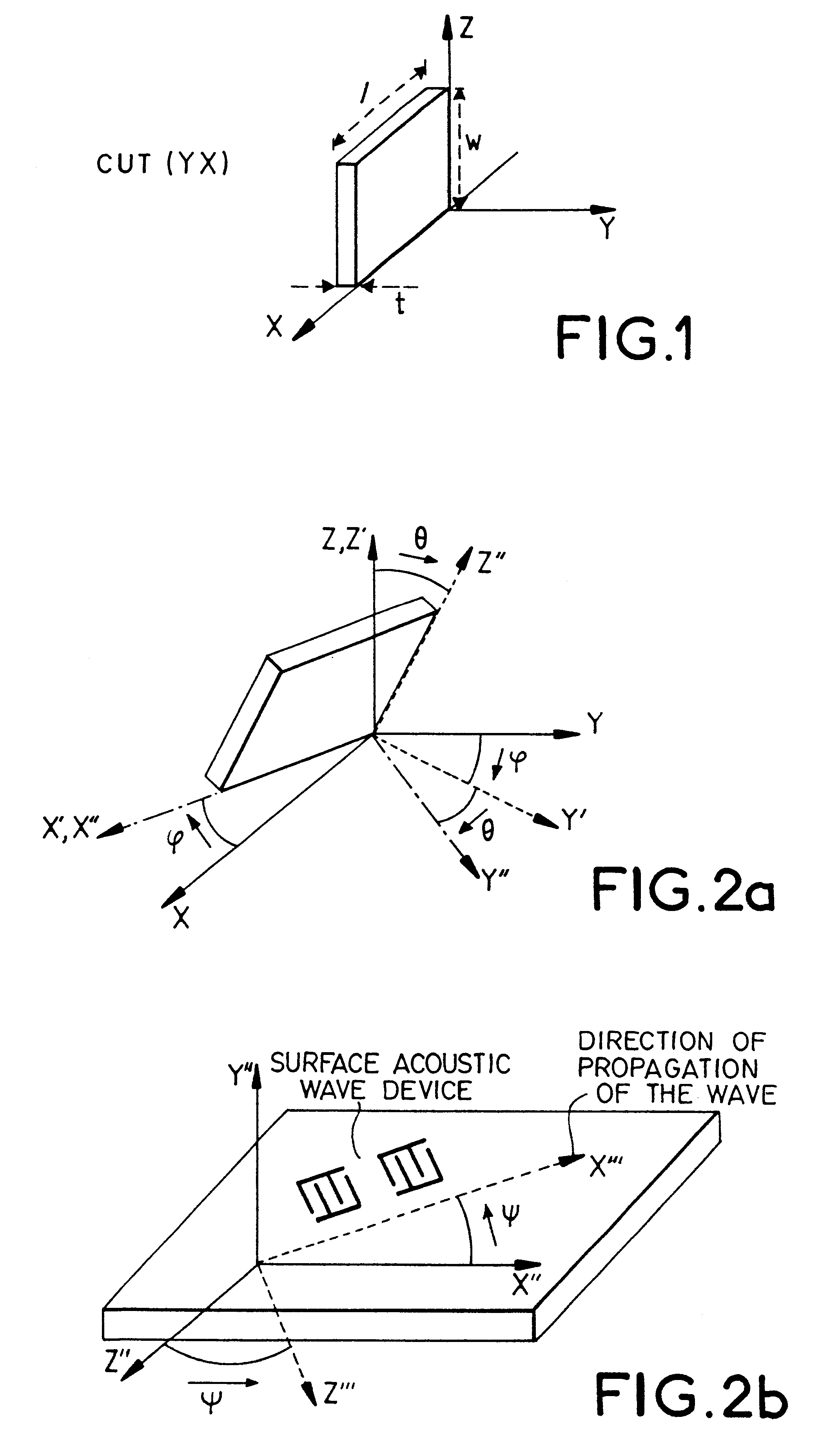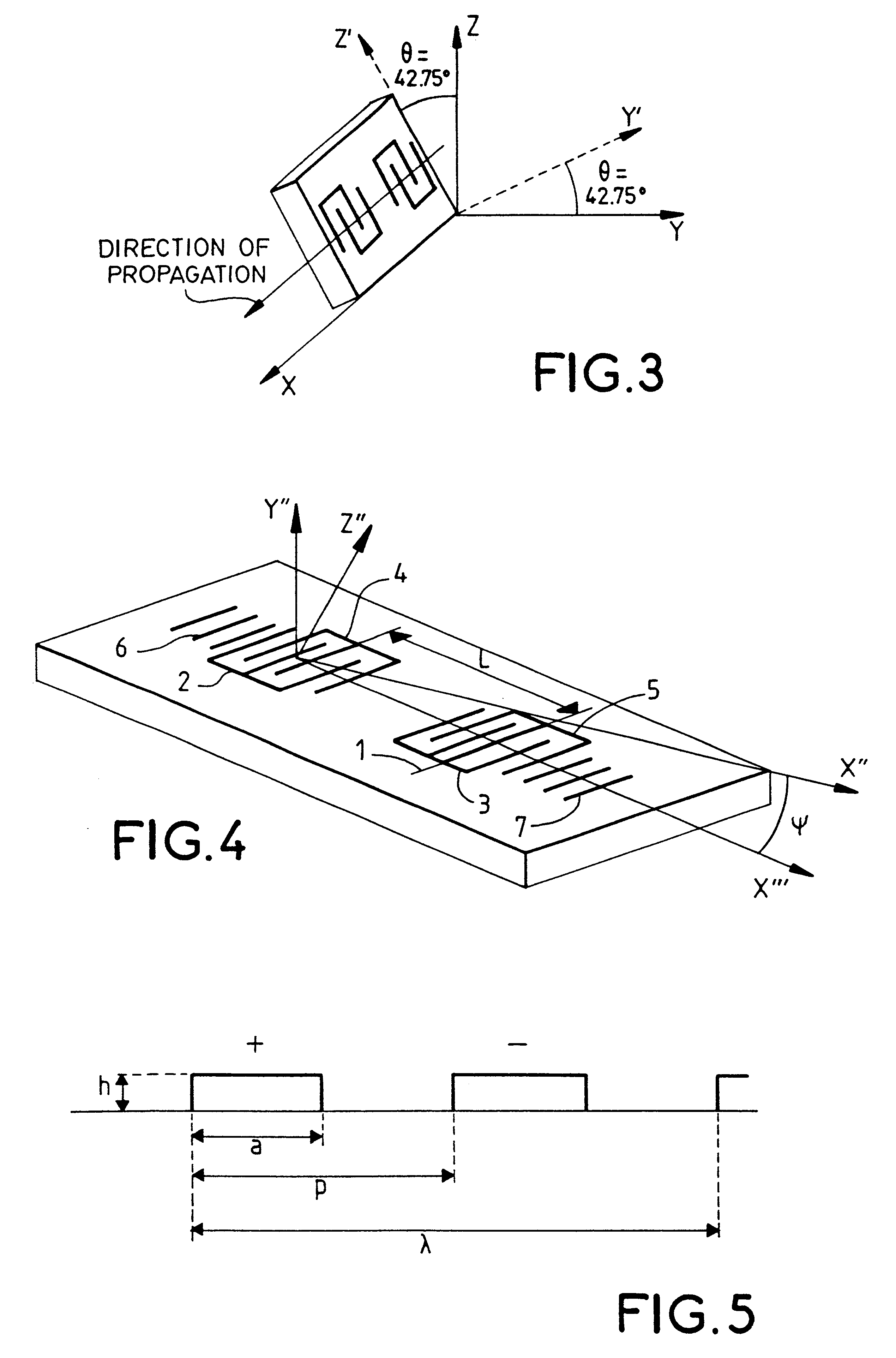Low-loss surface acoustic wave filter on quartz substrate with optimized cut
a low-loss surface acoustic wave and filter technology, applied in piezoelectric/electrostrictive/magnetostrictive devices, piezoelectric/electrostriction/magnetostriction machines, electrical instruments, etc., can solve the problem of limiting the thickness that can be used in practice, the maximum thickness of the electrode, and the sensitivity to the technological uncertainties of manufactur
- Summary
- Abstract
- Description
- Claims
- Application Information
AI Technical Summary
Problems solved by technology
Method used
Image
Examples
Embodiment Construction
FIG. 4 gives a very schematic view of an exemplary surface acoustic wave device according to the invention. The device comprises transduction centers and reflection centers made by means of metallic electrodes. More specifically, this device has two interdigitated electrode transducers 2, 3, 4 and 5 and two reflectors 6 and 7 formed by gratings of lines. The direction of propagation is the direction X'" of the substrate after rotation and is therefore the axis X" of the cutting plane defined by the angles .phi. and .theta. rotated by an angle .psi..
For each cutting plane defining a given quartz substrate, there is a preferred direction of propagation of the surface acoustic waves for which the performance characteristics of the device are optimized.
This direction of propagation is defined by the angle .PSI.:
According to the invention .PSI.=35.degree.+10.degree. (sin (3.phi.)).
Here below, for different directions of cutting planes and directions of propagation of the acoustic waves, ...
PUM
 Login to View More
Login to View More Abstract
Description
Claims
Application Information
 Login to View More
Login to View More - R&D
- Intellectual Property
- Life Sciences
- Materials
- Tech Scout
- Unparalleled Data Quality
- Higher Quality Content
- 60% Fewer Hallucinations
Browse by: Latest US Patents, China's latest patents, Technical Efficacy Thesaurus, Application Domain, Technology Topic, Popular Technical Reports.
© 2025 PatSnap. All rights reserved.Legal|Privacy policy|Modern Slavery Act Transparency Statement|Sitemap|About US| Contact US: help@patsnap.com



